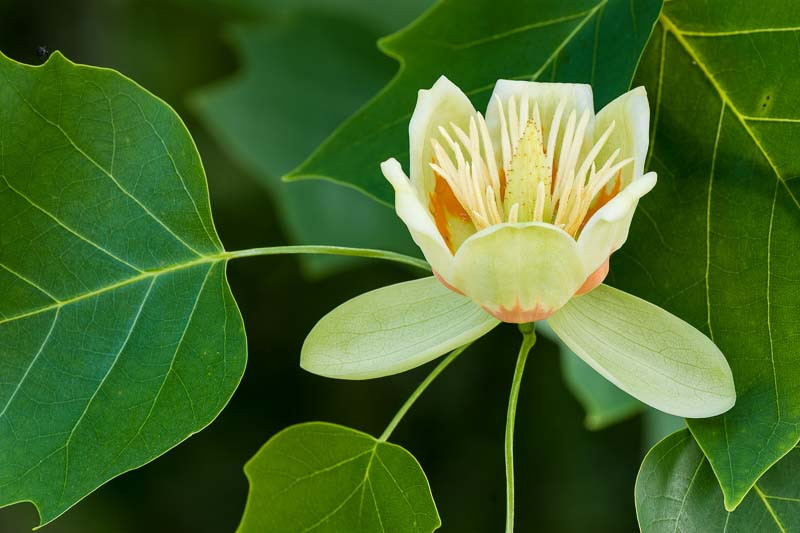Liriodendron (Tulip Tree)
The genus Liriodendron, commonly known for its Tulip Trees, offers a remarkable blend of aesthetic allure and functional utility. The two main species in this genus are Liriodendron tulipifera, native to North America, and Liriodendron chinense, found in parts of Asia.
Habit: Trees in the Liriodendron genus commonly display a pyramidal to oval-rounded shape and have a majestic presence. They are often large, growing up to 70-100 feet (21-30 meters) in height, with a broad canopy that lends itself well to shade and aesthetic appeal. The trees are deciduous, shedding their leaves in the fall but not before putting on a display of brilliant color.
Hardiness: The North American species is hardy in USDA zones 4-9, while the Asian species tends to thrive in slightly warmer climates. Both species prefer well-drained, slightly acidic to neutral soil, and while they can tolerate some drought when established, they thrive best with moderate, consistent moisture.
Flowers and Bloom Time: One of the most striking features of Liriodendron trees is their tulip-shaped flowers. These unique blooms generally appear from late spring to early summer and are often yellowish-green with hints of orange. Their lofty placement on the tree can make them easy to overlook, but they are a visual treat upon close inspection.
Uses: The grand stature of Liriodendron trees makes them ideal as shade trees in larger landscapes, public parks, and open spaces. They are also used as specimen or feature trees for their unique flower shape and vibrant fall colors. The wood of these trees is valuable, commonly used in furniture and veneers.
Benefits: Beyond their aesthetic contributions, Liriodendron trees have environmental benefits as well. They act as a carbon sink and provide habitat and food for local wildlife. The fruit produced attracts various bird species, contributing to the area’s biodiversity.
In summary, the Liriodendron genus offers trees that are both visually captivating and practically beneficial. They serve multiple purposes, from providing shade to enriching biodiversity, making them an excellent choice for a variety of landscape settings.

